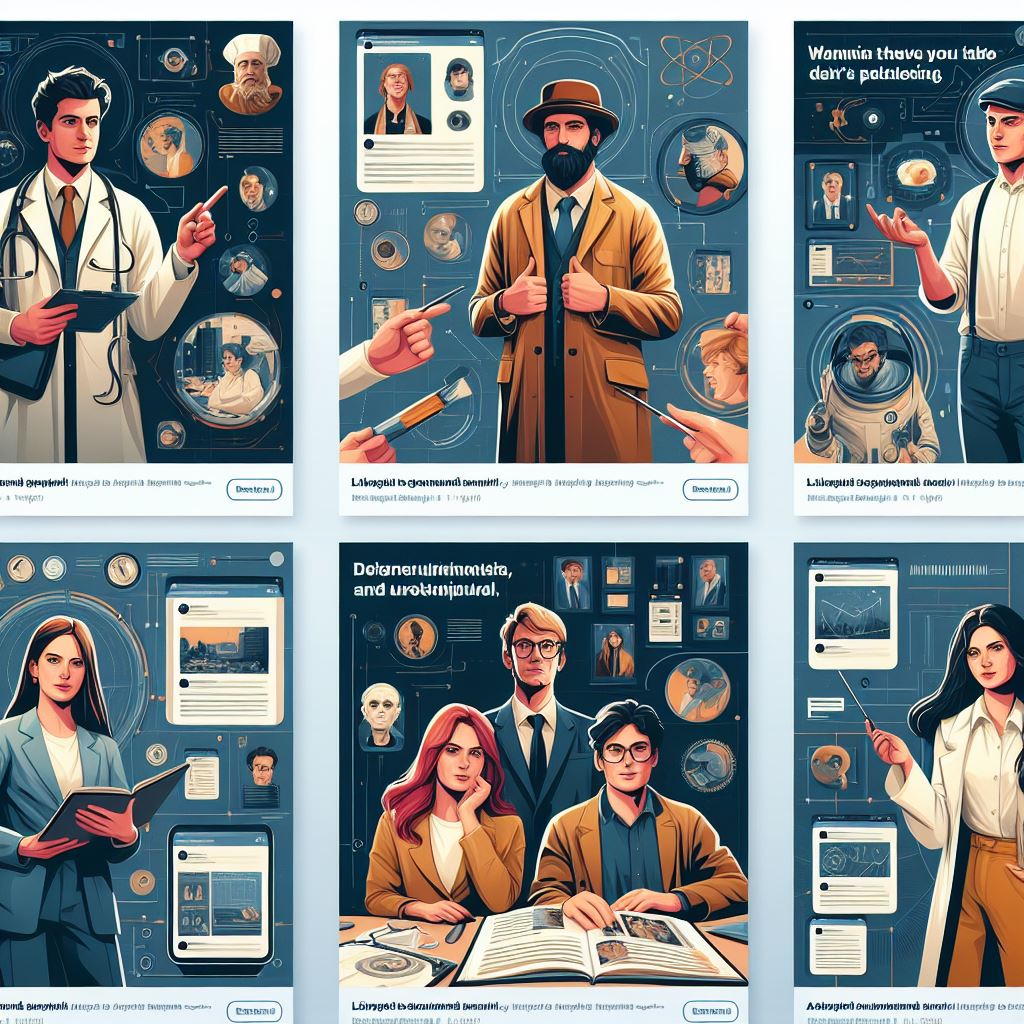In today’s digital age, advertising has evolved significantly from the traditional methods of billboards and TV commercials. One of the most effective modern strategies is targeted advertising. But what exactly is targeted advertising? Simply put, it is a form of online advertising that uses data collected about individuals to tailor advertisements based on their interests, demographics, and behaviors. This approach ensures that the ads are more relevant to the audience, thereby increasing the likelihood of engagement and conversion.
Targeted advertisements leverage a variety of data sources, including search queries, browsing history, social media interactions, and even geographic location. This data is then analyzed to create a profile of the user, which helps advertisers to deliver content that resonates with them. For instance, if you frequently search for fitness equipment online, you might start seeing ads for gym memberships or workout gear across different platforms.
At Gold Creek LLC, we specialize in creating these highly effective advertising campaigns. Our expertise ensures that your ads reach the right audience at the right time. Act now and reserve your ad space today! Visit goldcreekllc.net to get started.
Understanding Targeted Advertising

To fully grasp the concept of targeted advertising, it’s important to understand the mechanisms that make it work. Essentially, targeted advertising focuses on delivering ads to specific segments of the population who are most likely to find them relevant. This is achieved through a variety of sophisticated techniques and technologies, including data analytics, machine learning, and audience segmentation.
Data analytics plays a crucial role in targeted advertising. By analyzing vast amounts of data, advertisers can identify patterns and trends that reveal valuable insights about consumer behavior. For example, data analytics can help determine which products are popular among certain age groups or regions, allowing advertisers to tailor their messages accordingly.
Machine learning algorithms further enhance the effectiveness of targeted advertising by continuously learning and adapting to user behaviors. These algorithms can predict future behavior based on past actions, enabling advertisers to deliver more personalized and timely ads. For instance, if you have recently shown interest in travel destinations, you might start seeing ads for flight deals or hotel promotions.
Audience segmentation is another key component of targeted advertising. This involves dividing a broad audience into smaller groups based on shared characteristics such as demographics, interests, or purchasing behavior. By focusing on these specific segments, advertisers can create more relevant and engaging ads that resonate with each group.
In summary, targeted advertising is a powerful tool that combines data analytics, machine learning, and audience segmentation to deliver highly relevant ads to the right audience. This not only improves the effectiveness of advertising campaigns but also enhances the overall user experience.
Benefits of Targeted Advertising
In today’s competitive market, the benefits of targeted advertising are undeniable. By focusing on specific audiences, businesses can optimize their marketing efforts and achieve better results. Here are some of the key advantages of targeted advertising:
- Increased Relevance: Targeted ads are tailored to the interests and needs of specific audience segments, making them more relevant and engaging. This relevance increases the likelihood that potential customers will interact with the ad and convert.
- Higher Conversion Rates: Because targeted ads are shown to people who are more likely to be interested in the product or service, the conversion rates are typically higher compared to non-targeted ads. This means more leads and sales for the business.
- Cost Efficiency: By focusing on specific segments, businesses can allocate their advertising budgets more efficiently. This reduces wasted spend on audiences that are less likely to convert, resulting in a higher return on investment (ROI).
- Improved Customer Insights: Targeted advertising generates valuable data about customer preferences and behaviors. This data can be used to refine marketing strategies, develop better products, and enhance customer satisfaction.
- Personalized User Experience: Personalized ads create a more enjoyable and relevant experience for users. This not only improves customer satisfaction but also helps build brand loyalty and trust.
- Measurable Results: Targeted advertising allows for precise tracking and measurement of campaign performance. Businesses can easily monitor key metrics such as click-through rates (CTR), conversion rates, and ROI, enabling them to make data-driven decisions and optimize future campaigns.
Overall, the benefits of targeted advertising extend beyond just increasing sales. It also enhances customer engagement, improves brand perception, and provides valuable insights that can drive business growth. By leveraging the power of targeted advertising, businesses can stay ahead of the competition and achieve long-term success.
Examples of Effective Targeted Advertisements

To fully grasp the power of targeted advertising, it helps to look at real-world examples of effective campaigns. These examples highlight how businesses can leverage data and audience insights to create compelling and successful ads.
- Amazon’s Product Recommendations: One of the most well-known examples is Amazon’s use of targeted advertising. By analyzing shopping behaviors and previous purchases, Amazon delivers personalized product recommendations to users. These recommendations often lead to higher sales and improved customer satisfaction.
- Spotify’s Personalized Playlists: Spotify uses targeted advertising to create personalized playlists based on user listening habits. This not only enhances the user experience but also allows Spotify to promote new music and artists that align with individual tastes, driving more engagement and subscriptions.
- Facebook’s Audience Targeting: Facebook’s advertising platform allows businesses to target users based on a wide range of criteria, including age, interests, location, and online behavior. This precise targeting helps businesses reach the right audience with tailored messages, resulting in higher engagement and conversion rates.
- Netflix’s Content Suggestions: Netflix utilizes algorithms to suggest shows and movies that align with user preferences. This targeted approach keeps users engaged and subscribed, as they are more likely to discover content they enjoy.
- Google Ads’ Keyword Targeting: Google Ads enables businesses to target users based on specific keywords they search for. This ensures that ads are shown to people actively looking for related products or services, leading to higher click-through rates and conversions.
- Coca-Cola’s Social Media Campaigns: Coca-Cola has successfully used targeted advertising on social media platforms to engage younger audiences. By creating content that resonates with specific demographics, Coca-Cola has boosted brand awareness and loyalty.
These examples demonstrate the versatility and effectiveness of targeted advertising across various industries. By tailoring ads to the interests and behaviors of specific audiences, businesses can achieve remarkable results, from increased sales to enhanced customer loyalty. Embracing targeted advertising strategies can be a game-changer for any business looking to thrive in today’s digital landscape.
How to Create Targeted Advertisements

Creating effective targeted advertisements involves understanding your audience and leveraging various tools and methodologies to reach them. Here are the key steps to crafting successful targeted ads:
- Understand Your Audience: The first step is to clearly define who your target audience is. This includes demographics such as age, gender, income level, and location, as well as psychographics like interests, behaviors, and lifestyles. Tools like Google Analytics and social media insights can provide valuable data for this purpose.
- Segment Your Audience: Once you understand your audience, segment them into smaller, more specific groups. This allows you to tailor your messages to different subgroups, making your ads more relevant and engaging. For example, a clothing brand might segment its audience by age group and style preference.
- Choose the Right Platforms: Different audiences are active on different platforms. Research which social media channels, websites, or apps your target audience frequents and focus your advertising efforts there. For instance, younger audiences might be more active on Instagram and TikTok, while professionals might prefer LinkedIn.
- Create Compelling Content: Your ad content should resonate with your target audience. Use language, visuals, and offers that appeal specifically to the segments you are targeting. Personalization is key – the more your ad feels like it’s speaking directly to the individual, the more effective it will be.
- Utilize Data and Analytics: Modern advertising platforms provide a wealth of data that can be used to refine your targeting. Monitor the performance of your ads, analyze the data, and make adjustments as necessary. A/B testing different versions of your ads can also help determine what resonates best with your audience.
- Retargeting Strategies: Don’t forget to use retargeting techniques to re-engage users who have interacted with your brand but haven’t converted. Retargeting ads can remind these potential customers of your products or services, increasing the likelihood of conversion.
By following these steps, businesses can create targeted advertisements that not only reach the right audience but also deliver messages that resonate and drive action. Remember, the aim is to make your audience feel understood and valued, fostering a deeper connection with your brand.
Future of Targeted Advertising

The future of targeted advertising promises to be even more personalized and data-driven, thanks to advancements in technology and analytics. As businesses strive to connect with their audiences more effectively, several key trends are set to shape the landscape of targeted advertising:
- Artificial Intelligence and Machine Learning: AI and machine learning algorithms are becoming increasingly sophisticated, enabling advertisers to analyze vast amounts of data and predict consumer behavior with greater accuracy. These technologies allow for real-time optimization of ad campaigns, ensuring that ads are served to the right audience at the right time.
- Increased Privacy Regulations: With growing concerns about data privacy, regulations like GDPR and CCPA are setting new standards for how personal information is collected and used. Advertisers will need to navigate these regulations carefully, balancing the need for personalized ads with the requirement to protect user privacy.
- Enhanced Personalization: The future will see even more personalized ad experiences, driven by deeper insights into consumer preferences and behaviors. Personalized video ads, interactive content, and dynamic creative optimization will become more prevalent, making ads more engaging and relevant.
- Omnichannel Strategies: Consumers interact with brands across multiple touchpoints, and future advertising strategies will need to reflect this. Omnichannel marketing integrates various channels, such as social media, email, mobile apps, and in-store experiences, to create a seamless and consistent customer journey.
- Voice and Visual Search: As more consumers use voice assistants like Alexa and Google Home, and visual search tools like Google Lens, advertisers will need to adapt their strategies to these new modes of search. Optimizing for voice and visual search can help brands stay ahead in the competitive landscape.
- Ethical Considerations: Ethical advertising practices will gain more importance, with consumers increasingly favoring brands that demonstrate social responsibility and transparency. Advertisers will need to ensure that their campaigns are not only effective but also align with ethical standards and values.
As the advertising world evolves, staying ahead of these trends will be crucial for businesses looking to effectively reach and engage their target audiences. Embracing new technologies and adapting to changing consumer expectations will enable advertisers to create more impactful and meaningful connections.
Act now and reserve your ad space today! Visit goldcreekllc.net to secure your spot and stay ahead of the competition.

